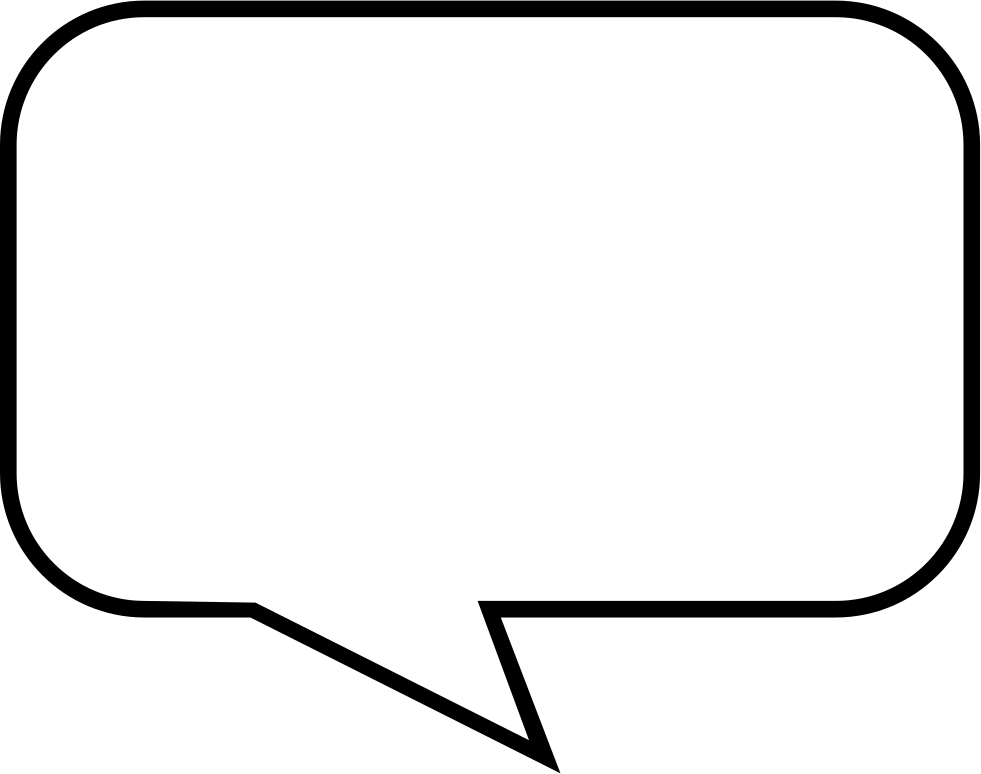Download top and best high-quality free Comment PNG Transparent Images backgrounds available in various sizes. To view the full PNG size resolution click on any of the below image thumbnail.
License Info: Creative Commons 4.0 BY-NC
The comment section features online blogs and news sites where publishers invite audiences to comment on posted content. This is a continuation of the old practice of publishing letters to the editor. However, the comment sections can be used for further discussion by the readers.
Various methods have been used for written comments on published works. In Germany in the 1500s, scholars used common practice to print copies of their ideas in public places such as church doors (see, for example, Luther’s Ninety-Five Theses). Later, newspapers and magazines began to publish letters to the editor. With the advent of computers, the bulletin board system allowed information to be posted and users could comment on or discuss posts.
The first online site to offer a comment section was Open Diary, which added reader comments shortly after its October 1998 launch. Readers of blogs on the site could publish public or private comments by authors directly on the page. The history of comment sections for news articles began in 1998 with The Rocky Mountain News, as they were one of the first newspapers to add online comments to the same page.
Although comment sections are standard today, newspapers hesitate at first to add them. In the late 2000s, comment sections quickly began to be added to news sites, and between 2007 and 2008, the number of the most common news sites with comment sections increased by 42%. In 2008, 75% of the top 100 newspapers had comment sections. In 2010, the American Journalism Review stated that news sites should not have anonymous comment sections. Following this statement, Reuters, ESPN, The Huffington Post, Popular Science, Sporting News and USA Today either closed the comments or removed them.
The following are examples of some news websites that have disabled comments:
- Vice Media closed its comments section in 2016. Finally, they noted, “we had to ban countless commenters over the years for threatening our writers and subjects, doing private citizens, and engaging in hate speech against pretty much every group imaginable.”
- NPR closed its comment section in 2016. One of the reasons for this was “notoriously known for hosting some of the most pointless and hateful commentaries around”.
- IMDb closed its comment section (forums, not user feedback section) in 2017. At the time of closure, one journalist noted that the comments section on this website was “known for hosting some of the most meaningless and hateful Comments”.
Download Comment PNG images transparent gallery.
- Comment PNG Clipart
Resolution: 512 × 512
Size: 8 KB
Image Format: .png
Download
- Comment PNG File
Resolution: 512 × 512
Size: 6 KB
Image Format: .png
Download
- Comment PNG Free Download
Resolution: 512 × 512
Size: 18 KB
Image Format: .png
Download
- Comment PNG Free Image
Resolution: 980 × 982
Size: 25 KB
Image Format: .png
Download
- Comment PNG HD Image
Resolution: 512 × 487
Size: 18 KB
Image Format: .png
Download
- Comment PNG High Quality Image
Resolution: 512 × 512
Size: 11 KB
Image Format: .png
Download
- Comment PNG Image File
Resolution: 512 × 512
Size: 4 KB
Image Format: .png
Download
- Comment PNG Image HD
Resolution: 2400 × 2894
Size: 57 KB
Image Format: .png
Download
- Comment PNG Image
Resolution: 980 × 890
Size: 10 KB
Image Format: .png
Download
- Comment PNG Images
Resolution: 960 × 274
Size: 74 KB
Image Format: .png
Download
- Comment PNG Photo
Resolution: 512 × 512
Size: 6 KB
Image Format: .png
Download
- Comment PNG Pic
Resolution: 512 × 512
Size: 2 KB
Image Format: .png
Download
- Comment PNG Picture
Resolution: 980 × 990
Size: 45 KB
Image Format: .png
Download
- Comment PNG
Resolution: 715 × 715
Size: 31 KB
Image Format: .png
Download
- Comment Transparent
Resolution: 512 × 512
Size: 10 KB
Image Format: .png
Download
- Comment
Resolution: 726 × 503
Size: 59 KB
Image Format: .png
Download
- Blog Comment PNG Clipart
Resolution: 512 × 512
Size: 27 KB
Image Format: .png
Download
- Blog Comment PNG File
Resolution: 980 × 940
Size: 20 KB
Image Format: .png
Download
- Blog Comment PNG Free Download
Resolution: 600 × 296
Size: 24 KB
Image Format: .png
Download
- Blog Comment PNG Free Image
Resolution: 980 × 952
Size: 31 KB
Image Format: .png
Download
- Blog Comment PNG HD Image
Resolution: 600 × 296
Size: 25 KB
Image Format: .png
Download
- Blog Comment PNG Image
Resolution: 512 × 512
Size: 6 KB
Image Format: .png
Download
- Blog Comment PNG Pic
Resolution: 981 × 774
Size: 25 KB
Image Format: .png
Download
- Blog Comment PNG Picture
Resolution: 1120 × 359
Size: 15 KB
Image Format: .png
Download
- Blog Comment PNG
Resolution: 512 × 504
Size: 6 KB
Image Format: .png
Download
- Blog Comment Transparent
Resolution: 512 × 512
Size: 7 KB
Image Format: .png
Download
- Blog Comment
Resolution: 512 × 512
Size: 3 KB
Image Format: .png
Download





























